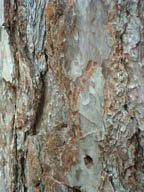linoprinting 2

There were some really good tips in the comments on the last post on linoprinting, so I'm showing them here - I thought they were excellent and I don't suppose a lot of people read the comments on blogs unless they are commenting themselves?
Lindsay said...
Yes, I agree that printmaking is more process oriented. Sometimes the graphic quality really appeals to me. Very nice explaination here and I'd only add one hint that helped me with multiple prints. I made sure the basement laundry line was clear and readied with cloths pins. Hanging the prints up to dry insured that my flat surfaces in the studio did not get taken up for 24 hours with drying prints.
Yes, I agree that printmaking is more process oriented. Sometimes the graphic quality really appeals to me. Very nice explaination here and I'd only add one hint that helped me with multiple prints. I made sure the basement laundry line was clear and readied with cloths pins. Hanging the prints up to dry insured that my flat surfaces in the studio did not get taken up for 24 hours with drying prints.
dinahmow said...
.... Amazing what some people can get with a spoon! I tried the water-based inks, but hate them! They dry too quickly and often don't roll evenly.I don't even use them for proofing (though schools are sticklers for the wretched stuff!) My advice to others is use good quality oil-based inks and el cheapo cooking oil for cleaning. As you say, kinder to the hands and the airways.And while lino prints are usually relief method, you can also print intaglio from lino.
Julie said...
Thank you for detailing your process Vivien. I did some collagraphs in 2007 using acrylic paints and we mixed them with Talens Thickening Medium to keep the paint workable. It worked quite well, you only need a little or it goes very thick. Also clean up with tissue paper to get rid of most of the residue as it goes all slimy if you add water. You can get a similar consistency to printing inks using this method, i.e. it has a 'sticky' texture.
Tina Mammoser said...
Nice to see your process with this. :) I really love linocuts, in fact they are appeal to my love of crisp line and edge which of course doesn't come through in my paintings.A couple other tips: a japenese brayer is definite a nice easy tool, japanese paper is also a great way to get an easy print. Much thinner so it picks up edges and detail much more easily. I've always printed my linocuts by hand, and dampen paper with a spray if needed. If you like a nice dark solid print sandpaper the surface of the lino lightly before carving. :)Lino is such a quick easy thing to start. If you're hardpressed, oil paints will do in a jiffy instead of ink.
Some food for thought there and things to experiment with :>)
I did learn to print intaglio lino but it needed a printing press and frankly I wasn't very good at it! With that process you can ink up the cutaway and raised parts and you get a bumpy print, fully coloured.
I shall have a go at sandpapering for sure as I do like the velvety solid colour of friends linoprints.
Hand made paper is lovely to print on I agree and has an interesting effect - I've used Indian hand made paper for this in the past.
The line is a very good idea as prints stacked everywhere for 24 hours isn't ideal.
Some of the alternative mediums are in the 'to try' list.
Any further tips are very welcome.



Comments